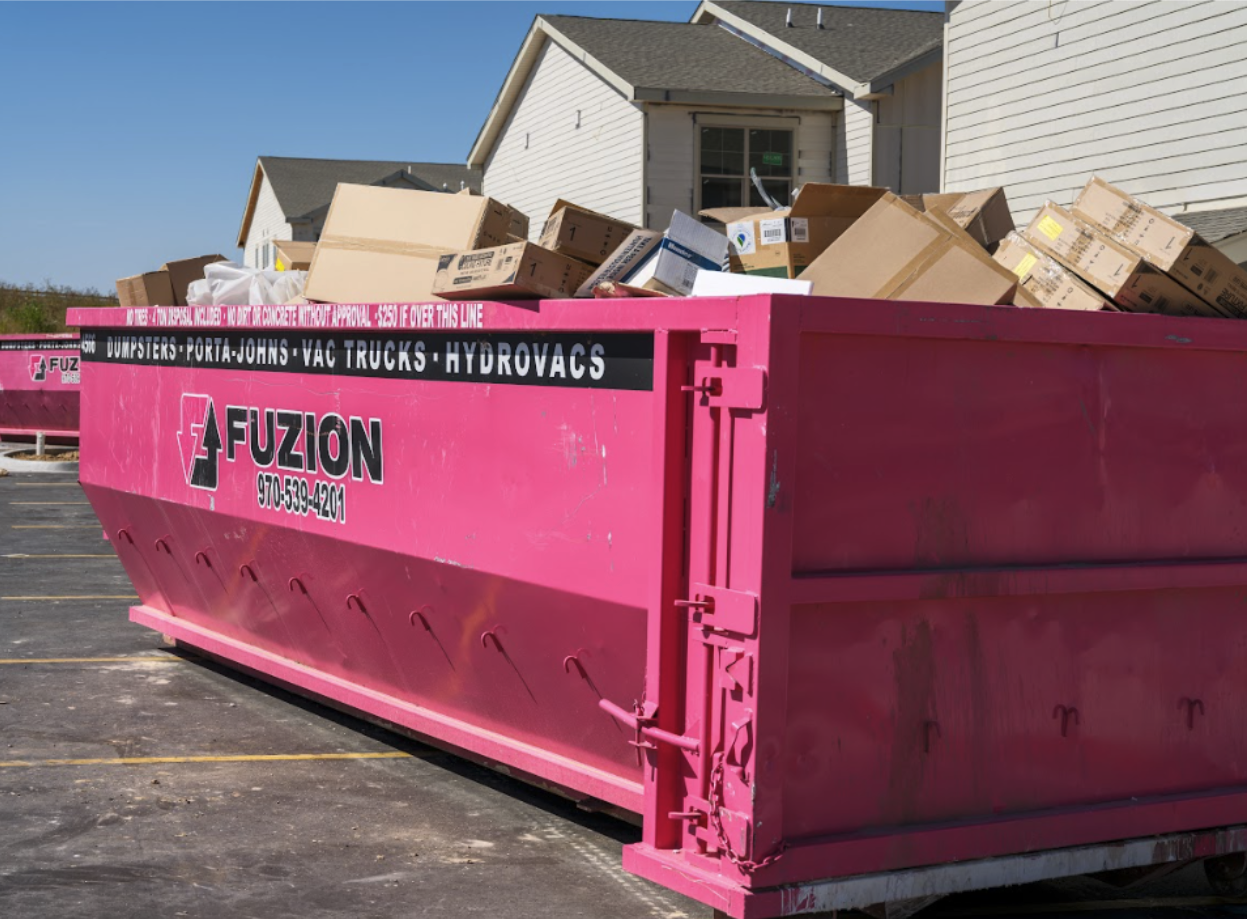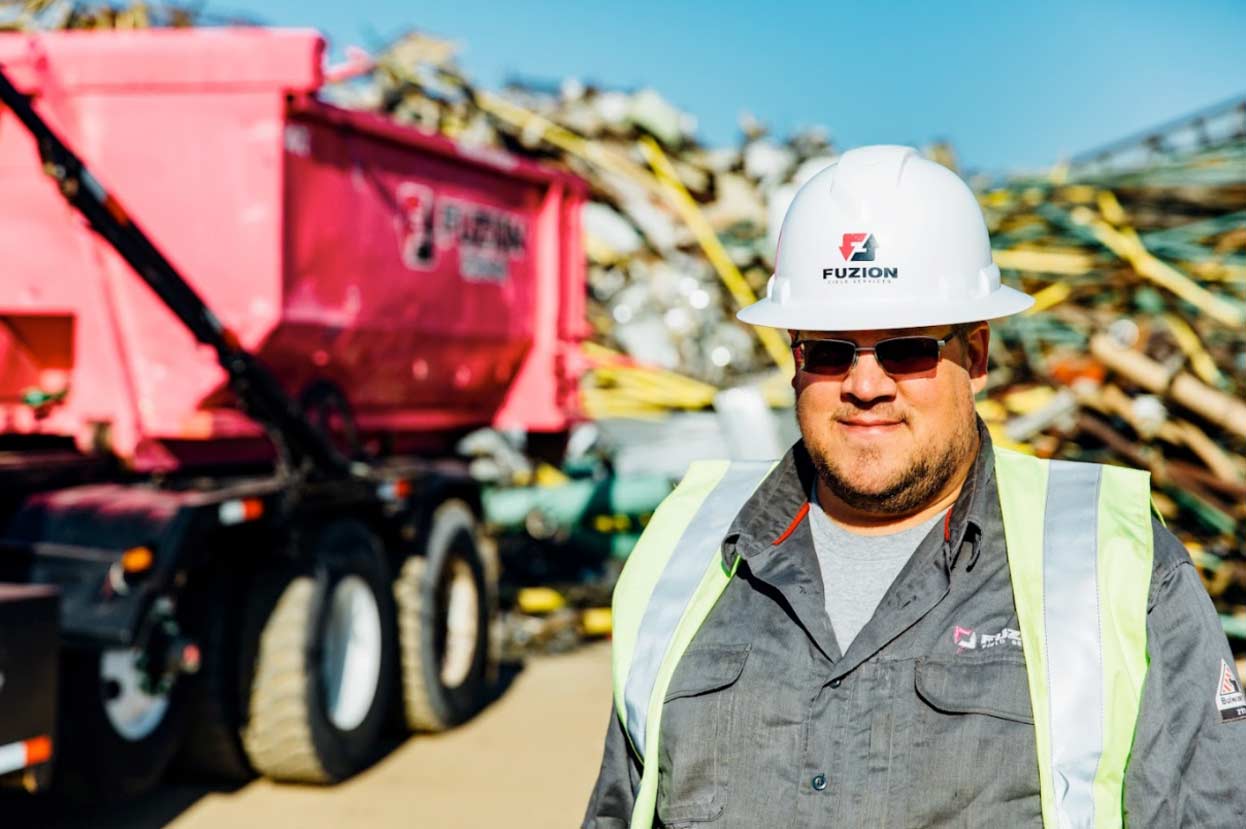How to Get Rid of Construction Debris: Smart Disposal Strategies for Your Job Site
- Blog
Every construction project leaves something behind. From piles of broken drywall and splintered wood to twisted metal and mounds of concrete, job sites generate waste at a scale that can’t be ignored. Knowing how to get rid of construction debris efficiently and responsibly can save money, keep your site compliant, and support sustainability goals from day one.
Why Planning Matters for Construction Waste Removal
The removal of construction debris is never one-size-fits-all.
- Some sites generate clean, reusable materials like metal scraps or lumber offcuts.
- Others deal with insulation remnants, adhesives, or tile shards that require special handling.
- Choosing a disposal strategy that matches your waste stream ensures better project flow and fewer surprises during inspections.
That’s why establishing a clear construction waste management plan before any heavy equipment arrives is more than a best practice—it’s a project essential.
Fuzion Field Services helps contractors map out this process early, supporting both compliance and sustainability benchmarks from day one. For teams looking to streamline operations and remain in full regulatory alignment, understanding how to get rid of construction debris before the first loadout is critical.
Material Sorting and LEED-Aligned Practices
One highly effective tactic is setting up on-site separation of recyclables. Instead of tossing everything into one mixed container, designate specific bins for concrete, wood, drywall, and metals. The payoff? Less contamination and a higher chance of those materials being recycled or repurposed instead of heading straight to landfill.
It also positions your project to qualify for LEED credits if documented and executed properly. Fuzion offers support in both container logistics and hauling schedules to help contractors streamline this kind of separation—reducing clutter and increasing waste diversion without slowing down the crew.
Matching Dumpster Strategy to Project Needs
Dumpster rentals are a key part of most construction cleanup plans, but it’s important to choose the right type and size for your specific project. Picking the right container helps prevent overflow, keeps the site safe, and avoids unnecessary costs.
For example, roll-off dumpsters work well for heavy debris like concrete or roofing materials, while lighter construction waste might be better handled with smaller containers that can be swapped out more often.
Fuzion’s dumpster selection guide helps clients avoid common mistakes by factoring in the volume of waste, project timeline, and how much space is available on-site. Choosing the wrong type or number of dumpsters can lead to delays or safety issues, so it’s worth taking a tailored approach. And if your site has limited access or tight space, a professional dumpster plan can save you a lot of hassle down the road.
The Value of Professional Waste Removal Services

Hiring a qualified waste removal partner improves both efficiency and compliance. These services do more than haul trash—they provide insight into local facility options, material restrictions, and recycling opportunities that many contractors may overlook. With Fuzion, removal plans are fully customized to suit your schedule, waste types, and local regulations.
Teams receive timely pickups, clean equipment, and expert guidance that supports documentation and tracking—especially important if the project aims to meet environmental certifications or must comply with local mandates. This type of support is essential when learning how to get rid of construction debris under tight deadlines and evolving project scopes.
Navigating Local Regulations
Many municipalities now enforce recycling ordinances for construction sites. For example, Denver’s Waste No More ordinance requires commercial job sites to separate and divert specific materials from the landfill and submit waste management documentation to the city. Non-compliance can lead to permit delays or penalties.
Contractors must stay current with local codes and ensure every disposal step—from sorting to transport—aligns with those rules. Fuzion’s experience navigating regional regulations makes them a valuable partner in keeping projects moving without regulatory setbacks.
Reuse and Salvage Opportunities
Not all material needs to be discarded. Leftover items such as cabinetry, hardware, fixtures, or even surplus tile can often be salvaged and donated to local reuse centers like Habitat for Humanity ReStores. These donations keep reusable goods out of landfills while benefiting the community.
They also provide contractors with a tangible way to show environmental commitment to clients. It’s a simple act with a big return—especially on long projects where leftover materials add up fast.
1. Deconstruction as a Sustainable Alternative
A growing number of builders are also adopting deconstruction methods as an alternative to traditional demolition. This process involves taking apart structures piece by piece to salvage valuable components like framing lumber, piping, or architectural elements. While it may take more time than demolition, it significantly reduces waste and offers resale potential for high-value materials.
It also meets the growing demand from clients who want to minimize environmental impact. Contractors familiar with deconstruction aren’t just reducing waste—they’re preserving value. For those who prioritize sustainability, this is one of the most efficient ways to manage waste while learning how to get rid of construction debris responsibly.
2. Leveraging Local Facilities for Smaller Jobs
In some cases, the best method to get rid of construction debris may be as simple as using your local waste transfer facility. Many areas offer dedicated drop-off services for sorted debris. However, it’s critical to check what types of material they accept, whether you need an appointment, and whether fees apply.
This route is ideal for smaller projects or for contractors handling final cleanup after subcontractors have completed their work. As always, clear communication and documentation help ensure you meet disposal standards without delays.
Integrated Disposal Planning for Long-Term Gains
Construction garbage disposal doesn’t need to be overwhelming. With the right planning and a dependable partner, waste management can become an integrated part of your project strategy. Fuzion Field Services works closely with builders and project managers to optimize disposal from start to finish—whether through recycling coordination, flexible pickup schedules, or regulatory assistance.
Their team’s experience helps avoid costly errors and keeps projects moving on time and on budget.
Aligning Waste Removal with Professional Standards

Understanding how to get rid of construction debris is more than an operational question—it’s a reflection of responsibility and professionalism. The volume of waste produced by this industry is significant, but so is the opportunity to reduce, reuse, and recover materials. The choices you make around building rubbish removal can speak volumes about your business, both to clients and regulators.
With Fuzion’s support, you gain a framework that aligns practical execution with broader environmental values.
Choose Smarter Construction Waste Solutions with Fuzion Field Services
There’s more than one way to address the challenges of debris disposal, but success comes down to planning, execution, and knowledge. If you’re still determining how to get rid of construction debris in a way that aligns with cost, compliance, and sustainability goals, a smart disposal plan is essential. Contact us today for more information.